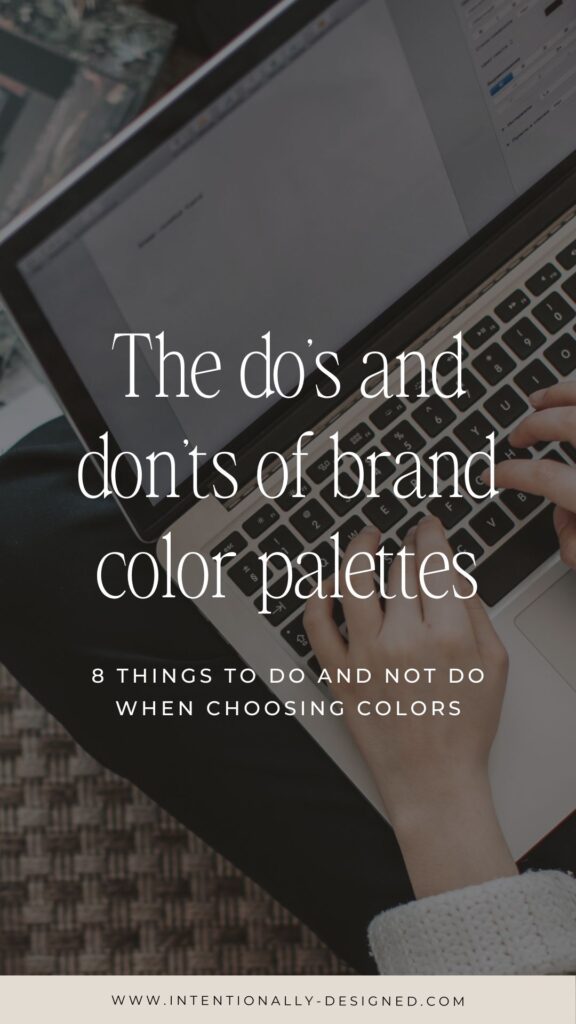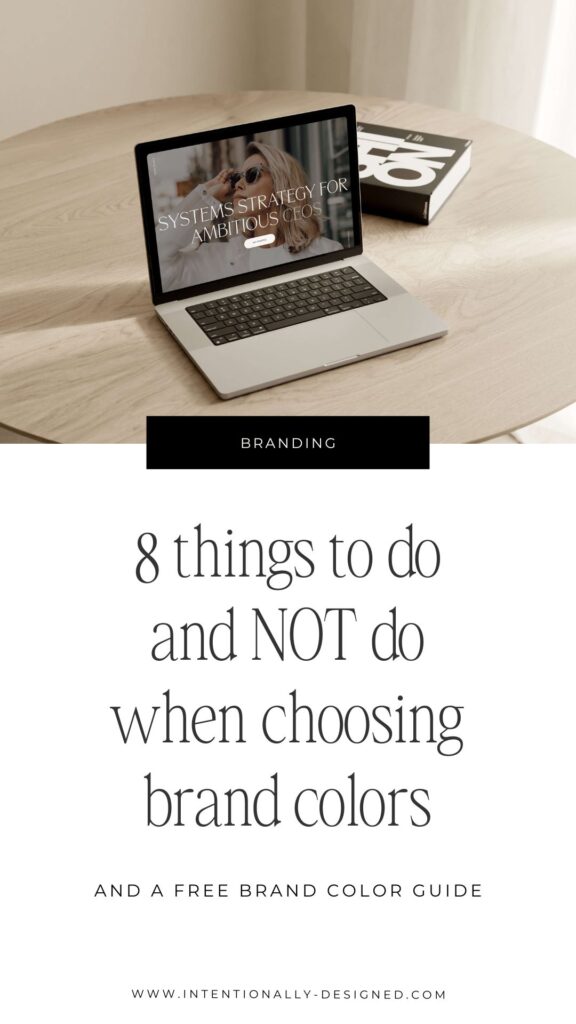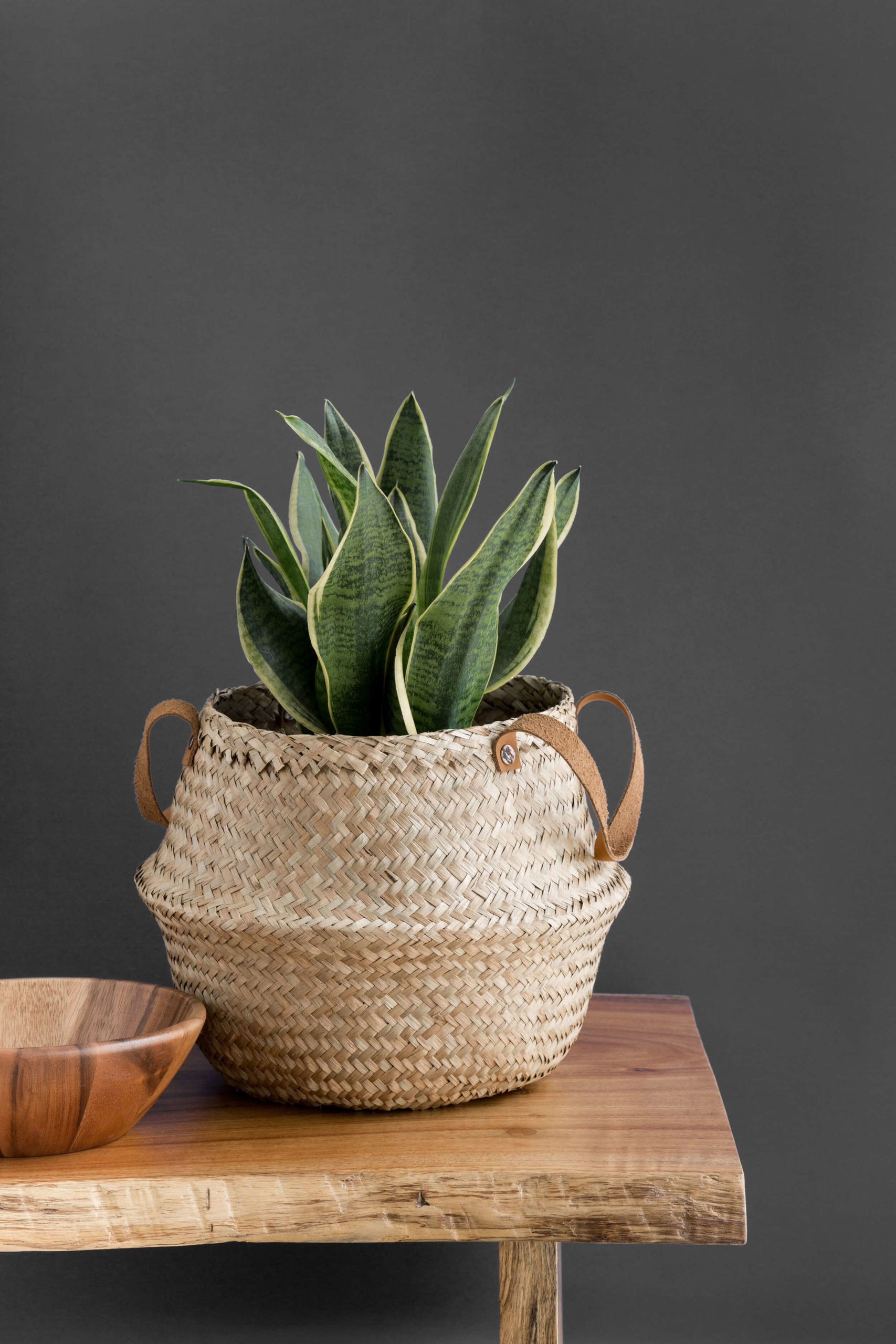Are you stuck in a loop of changing your brand colors constantly, desperately searching for that perfect combination that feels just right? This list of top dos and don’ts will help you end your color confusion and confidently choose and use the right brand colors.
Do’s:
- Do Research: Conduct thorough research on color psychology, cultural associations, and your target audience’s preferences to inform your brand color choices.
- Do Reflect Brand Values: Choose colors that align with your brand’s values, personality, and messaging. The colors you select should convey the essence of your brand.
- Do Consider Context: Take into account where and how your branding will be displayed – on websites, packaging, signage, etc. Ensure the colors maintain their intended impact across various mediums.
- Do Establish Consistency: Create a consistent brand color palette that can be used across all brand materials. Consistency helps build brand recognition and a cohesive identity.
- Do Test Accessibility: Ensure that the colors you choose meet accessibility standards for people with visual impairments. High contrast and readable text are crucial, especially on digital platforms.
- Do Use Color Hierarchy: Assign different colors to different elements based on their importance. This helps guide the viewer’s attention and creates a sense of visual hierarchy.
- Do Be Unique: Strive for a distinctive color palette that sets your brand apart from competitors. Being memorable helps with brand recognition.
- Do Think Long-Term: Choose brand colors that have longevity and won’t become quickly outdated. Trends come and go, but your brand identity should have lasting power.
Don’ts:
- Don’t Choose Colors Randomly: Avoid selecting colors without considering their meaning and impact. Thoughtlessly chosen colors can send mixed messages and confuse your audience.
- Don’t Overcomplicate: Keep your color palette relatively simple. Too many colors can create visual clutter and dilute your brand’s message.
- Don’t Ignore Cultural Differences: Colors can have different cultural associations. Be aware of how your brand color choices might be perceived in various regions or demographics.
- Don’t Sacrifice Readability: While creativity is important, don’t sacrifice readability for the sake of using a certain color. Text and important information should always be easy to read.
- Don’t Follow Trends Blindly: While it’s important to stay current, don’t choose colors solely based on current trends. Trends change quickly, and your branding should have a timeless quality.
- Don’t Neglect Testing: Before finalizing your brand color palette, test it with your target audience. Their feedback can provide valuable insights and help you make informed decisions.
- Don’t Clash with Your Industry: While it’s good to stand out, consider the conventions within your industry. Certain colors may be associated with specific industries, and deviating too far from these norms might confuse your audience.
- Don’t Underestimate the Power of Neutral Colors: Neutrals like black, white, and gray can play a crucial role in your branding by providing balance, contrast, and a clean backdrop for other colors and elements.

Recap
Good use of color in branding will directly influence the way someone feels when they interact with your brand. Instead of randomly choosing colors that feel good this week, take the time to determine which colors will work best for your brand. Use this list of do’s and don’ts to help guide your decision.
Next Steps
Need help choosing your brand colors? Grab the FREE brand color guide and palette library to get started. Then take it a step further with the Brand Style Workbook to clearly define your full brand style. Once you have your brand aesthetic established, you can polish off your brand visuals with a premade brand for an effortlessly elevated brand.
More Resources
Save for Later
Enjoy this article and find it helpful? Pin this image on Pinterest so you’ll always have this info on hand!








